DISCOVERING PORTUGAL: Évora
Bochechas and human bones in the land of the Black Pig
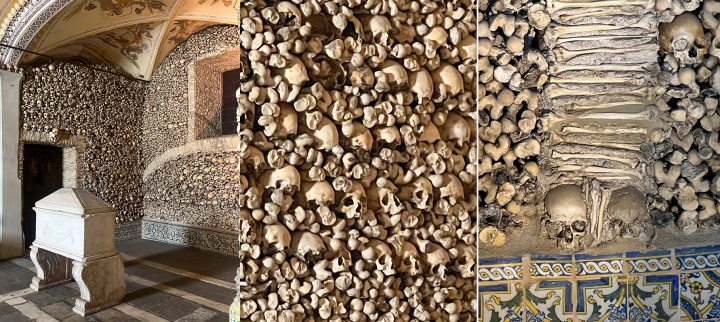
A long bridge takes you there and an even longer one brings you back. We’d seen the first in Belém, marvelling that it was almost identical to San Francisco’s Golden Gate Bridge. Now we were on it, high above the Tagus River, heading for Évora.
Pork cheeks called bochechas and a traditional asparagus side dish would entrance our palates in the beautiful region the Portuguese call Alentejo. Just as calçadas, cork and queijo fresco had waved their magic wands on our senses everywhere we’d been in southern Portugal.
Calçadas, the pavement cobbles in their glorious patterns, everywhere you go; azulejos, the beautiful blue tiles that have been a part of the fabric of Portugal for centuries, and sobreiros, the magnificent cork trees with their red trunks that punctuated our drive towards ancient Évora, the beating heart of the Alentejo.
And, just as ubiquitous here as it had been in Cascais and Lisbon, the delightful cool snack they call simply queijo fresco: fresh cheese. We ate queijo fresco at home with our friend in her Cascais flat, in restaurants as a starter nibble, for breakfast in a café, and again for breakfast with new friends in their monte (a farm-style home) in the eastern province of Alentejo.
There’s a familiar charm about queijo fresco, just as there is about the calçadas and the azulejos. They quickly become your friends, on your palate, underfoot, and beguiling your eyes everywhere you go.
The calçadas, or cobbles, arranged in striking patterns, are as ever-present as the air itself; on pavements in Cascais and Belém, along boulevards in Lisbon, and in old forts now turned into smart hotels called pousadas. Equally prevalent are the azulejos, one of which, in art deco style, was to come home with me.
I’d pondered on the name for those wall tiles, azulejo, and how similar it is to the region we were now driving towards, the Alentejo. The answer is that Tejo is the Portuguese name for the Tagus River, and Alentejo means “beyond the Tagus”. You literally have to cross it to get there.
The tiles, azulejos in the plural, typically blue or blue and white but in other hues too, have been a feature of Portuguese culture since the centuries of Moorish rule that ended in the 13th century. This means that the deep and colourful history of this country – once invaded and ruled, later an invader and ruler of other nations – is visible everywhere you go. After mere days you see Portugal itself as painted in a blue and white mosaic.
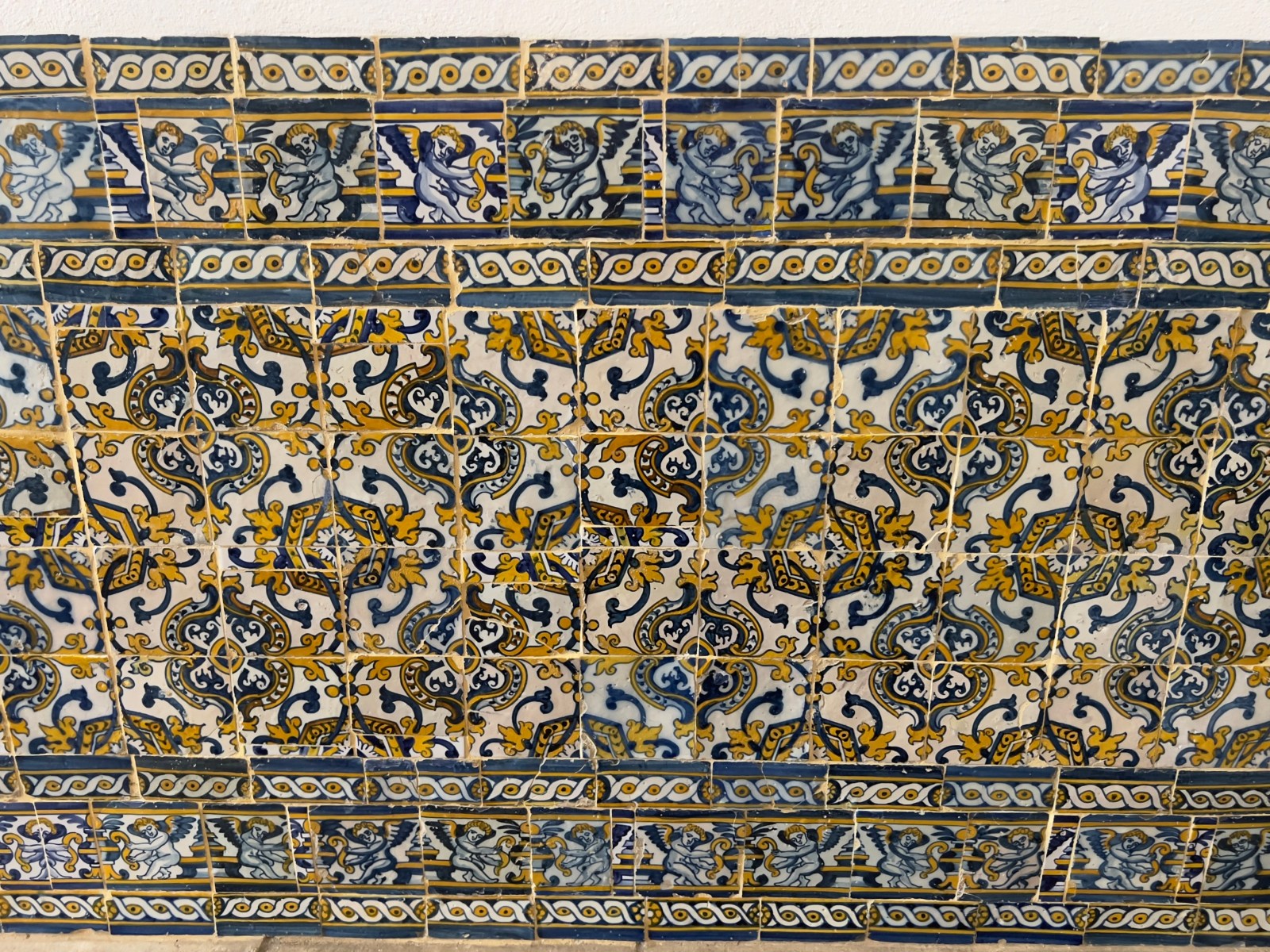
Ancient tiles in the entrance hall of the Chapel of Bones, Évora. Note how irregular they are. (Photo: Tony Jackman)
But there are vivid splashes of red too, and they arrest your eye as you drive into the Alentejo, past eucalyptus and pine, silver birch and cork oak trees, with stork nests perched high on pylons. Red also catches your eye in every city, town and village, in the terracotta clay tiles on almost every roof.
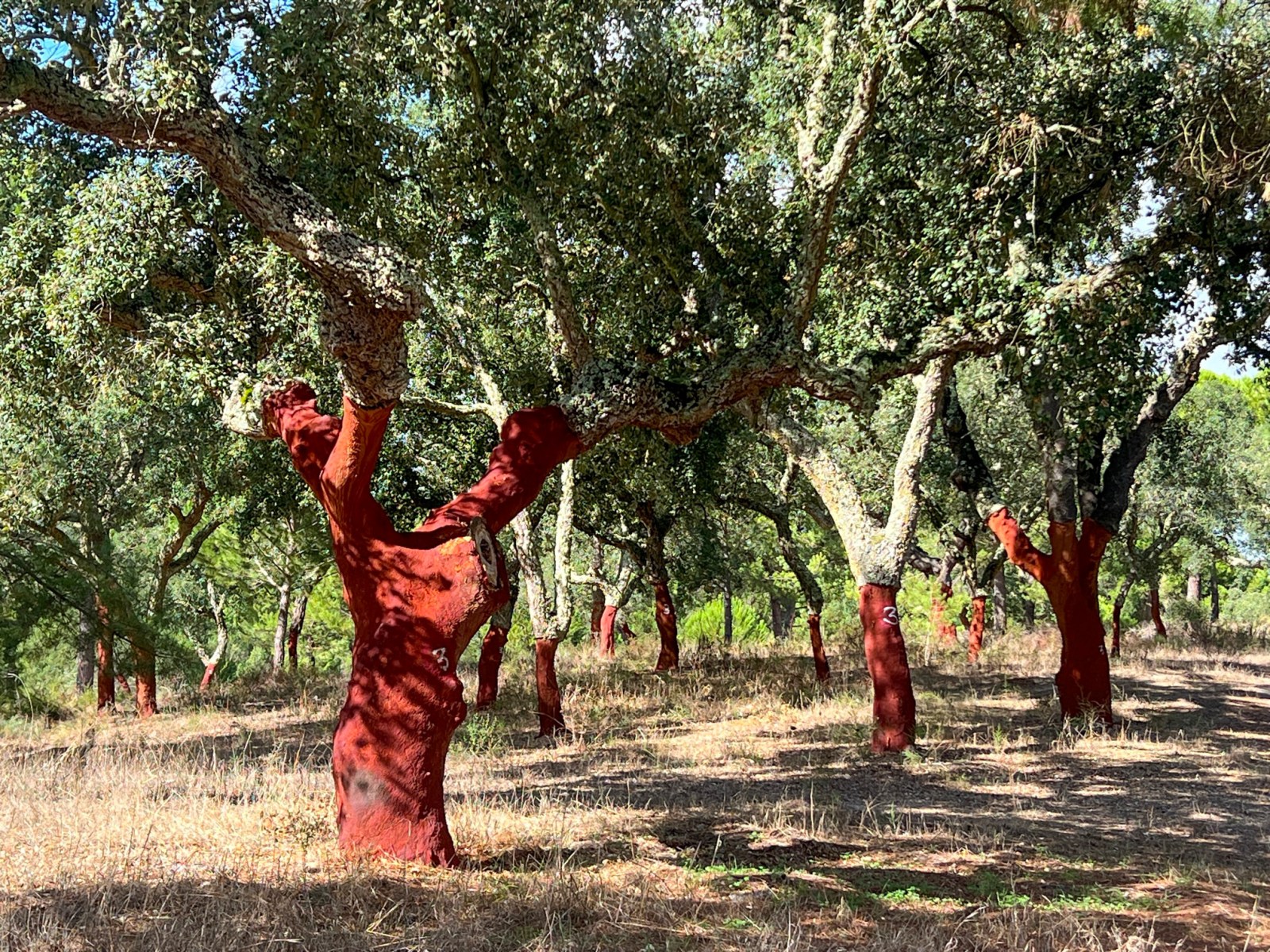
Cork oak trees in Ribatejo, neighbouring Alentejo province. (Photos: Tony Jackman)
Cork oak trees called sobreiros punctuate the landscape, with many of their trunks a brilliant red after their cork has been harvested. Scrawled on them is a number from 1 to 9. The bark (the cork) is stripped every nine years when a number representing that year is painted on the tree.
So a 3 indicates it was last stripped in 2023 and must be harvested again in 2032, nine years later. Then it will get a 2. And they’re not only for wine bottle corks. This is a massive industry here and you find cork in all manner of things, from purses and handbags to high-fashion dresses, shoes, watches and sunglasses frames.
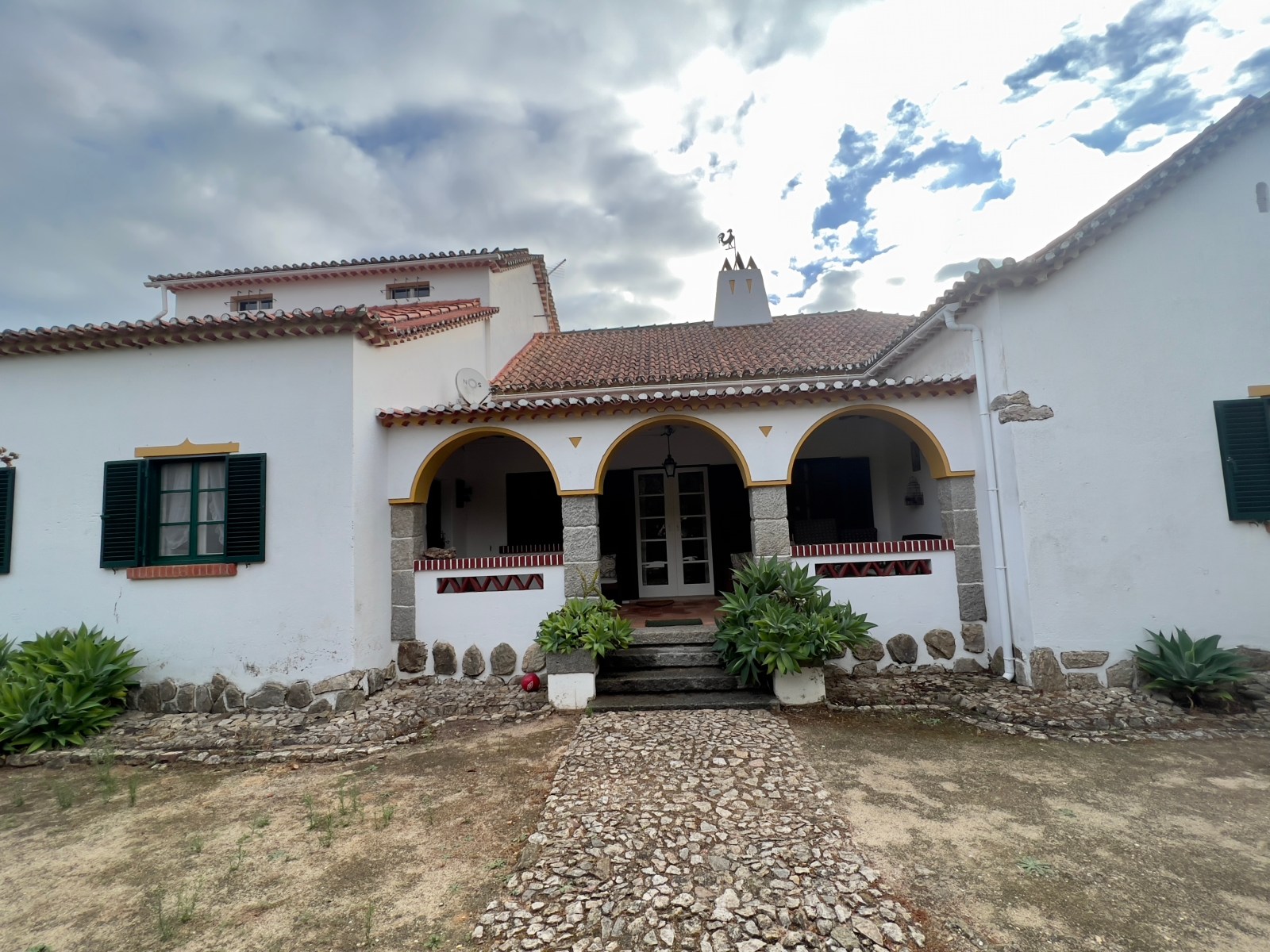
The monte we stayed in, in Alentejo. (Photo: Tony Jackman)
It had been an exquisite gift to have a night in a monte, or monte Alentejano, a whitewashed farmhouse set on a hill or rise (hence its name). At the heart of the house with its high ceilings is the kitchen with its beautifully tiled range. For sundowners, we sat around a terrace table nibbling their local cheese, borqueijos, a sheep’s cheese from Borba.
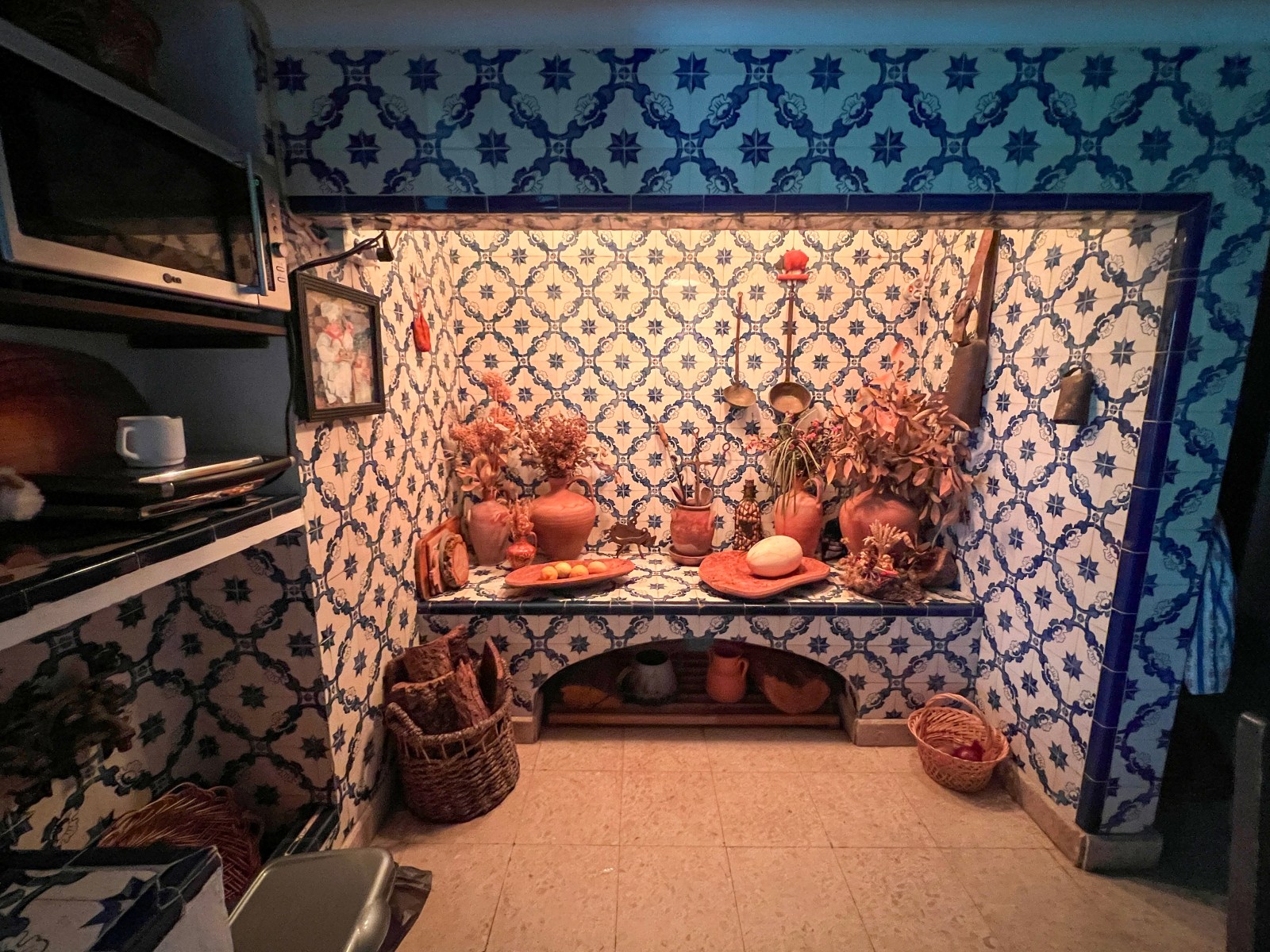
The kitchen fireplace in our monte in Alentejo. (Photo: Tony Jackman)
Later at night, we sat at the grand dining table sipping luscious Velhotes Ruby Porto, and at breakfast, we relished queijo fresco from Vendas Novas in the Évora district, and Queijo de ovelha curado, a cured sheep’s cheese. If “fresh cheese” was available where I live, I’d eat it every day for breakfast.
For dinner the previous evening, we were taken to the kind of country restaurant where locals eat, humble, unpretentious and a little bit rough and ready at the bar end next door. It was called Maça (apple). Names I’d never heard before abounded on the menu and tripped from the lips of our friend and friend and host, a very private person who was born South African and is now as Portuguese as an azulejo or calçada.
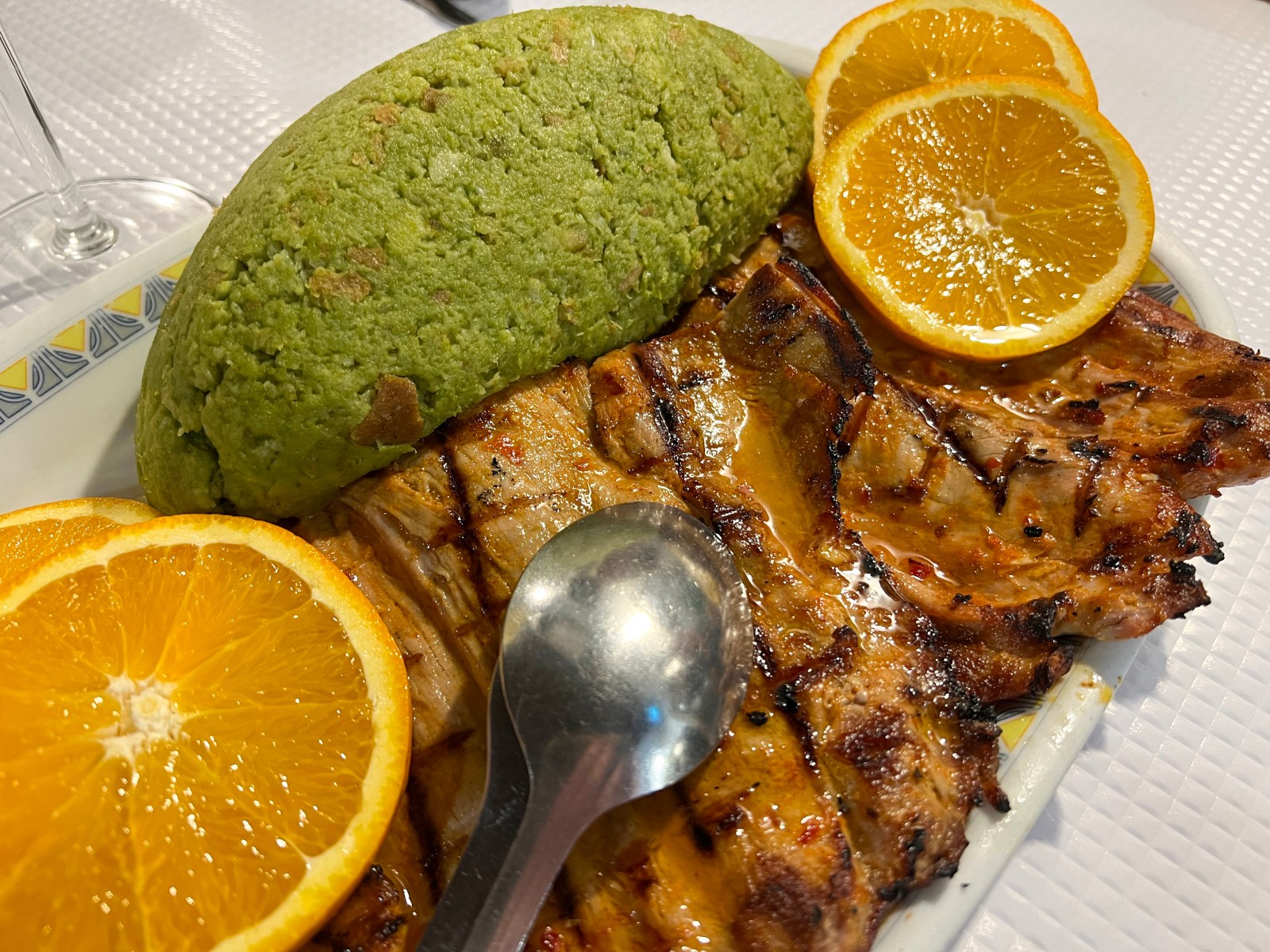
Lombinhos do porco, or pork tenderloin, at Maça restaurante. On the side is migas de espargos, a very local speciality of asparagus, bread and garlic. (Photo: Tony Jackman)
Porco preto. Migas de espargos. Bochechas. Preto estufadas. Lombinho do porco. Sericaia. I was as lost as an English child scanning his first French menu. But I’m here to learn and that is something I like to do every day.
This is the country of the black pig. Porco preto, literally black pig, is the name of the Alentejo breed that is world famous for its meat and the dry-cured ham they call presunto. Pata negra, the “black hoof” ham of Alentejo, much like the famous Jamón ibérico of neighbouring Spain.
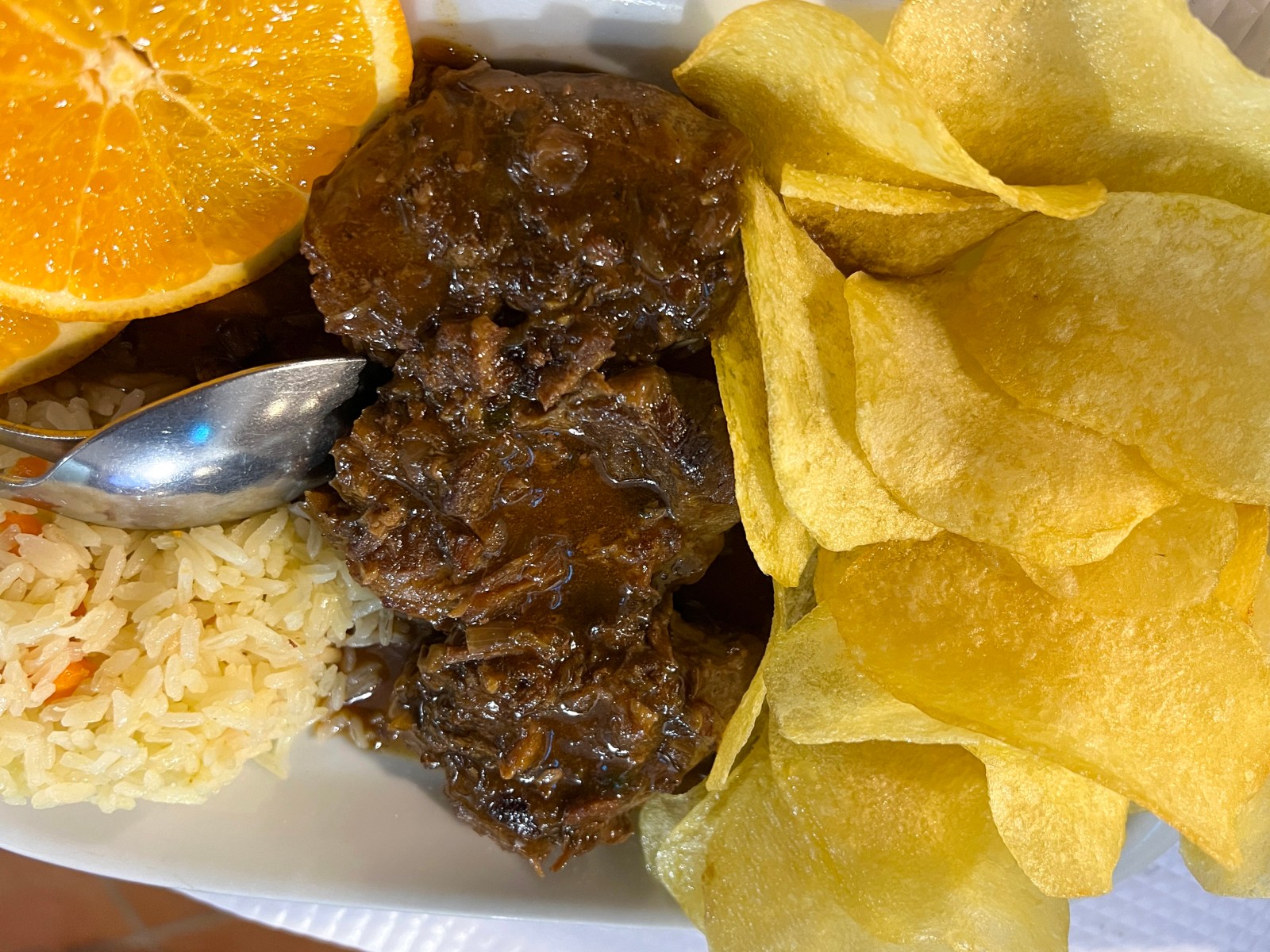
My bochechas (pork cheeks). (Photo: Tony Jackman)
Preto estufadas, or black pig stew. Lombinho do porco, or pork tenderloin, which came served as a great big slab of utterly tender and moreish lean pork. It was enough for two to share.
Bochechas are the cheeks, and I ate one for dinner that night, sensuously soft and so delicious. Migas de espargos is a regional dish of asparagus mashed with bread and plenty of garlic. It’s one of those dishes that takes some getting accustomed to, but I quickly appreciated its charms. All the meat dishes were served with slices of orange, a common garnish here.
Sericaia? A South African seeing it is likely to think: melktert? But it has its own flavour and texture and hardly tastes like our milk tart at all. It’s spongy, lightweight, and very eggy in the way that crème caramel is very eggy. Far more like crème caramel, in fact, than it is at all like melktert or, for that matter, Portugal’s own pastéis de nata.
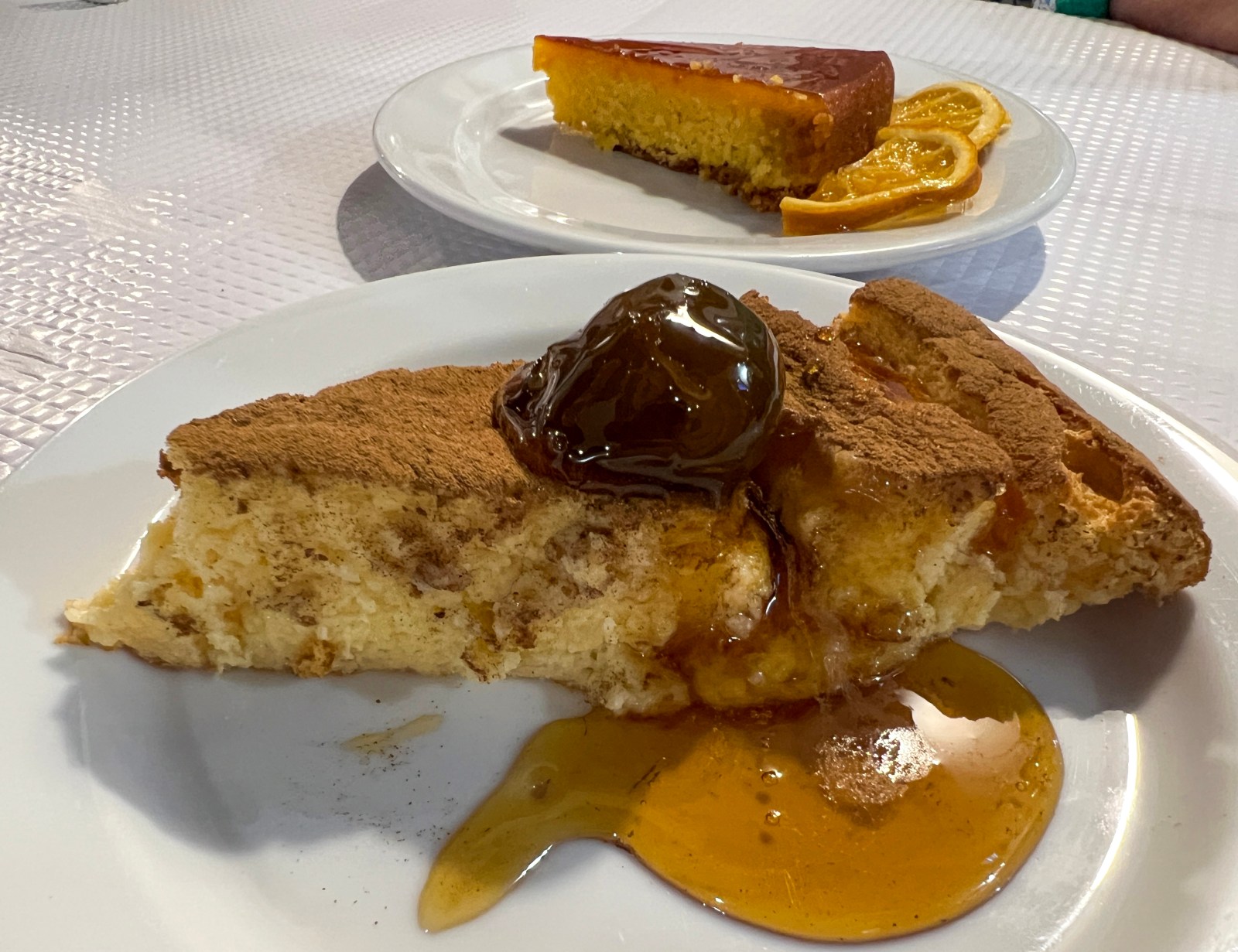
Sericaia (foreground) served with local Evas plums, and the wonderful orange and almond tart in the background. (Photo: Tony Jackman)
Sericaia, also known as Cericaia or Cericá, is traditionally served with Evas plums, and ours at Maca was as purely traditional as that. Such a treat and absolutely one of the best dishes I ate while in Portugal… until two minutes later when a second dessert arrived. We didn’t know the name for it, but it was a spectacularly delicious orange cake with a layer of orange gel on top. It tasted even better than it looked…
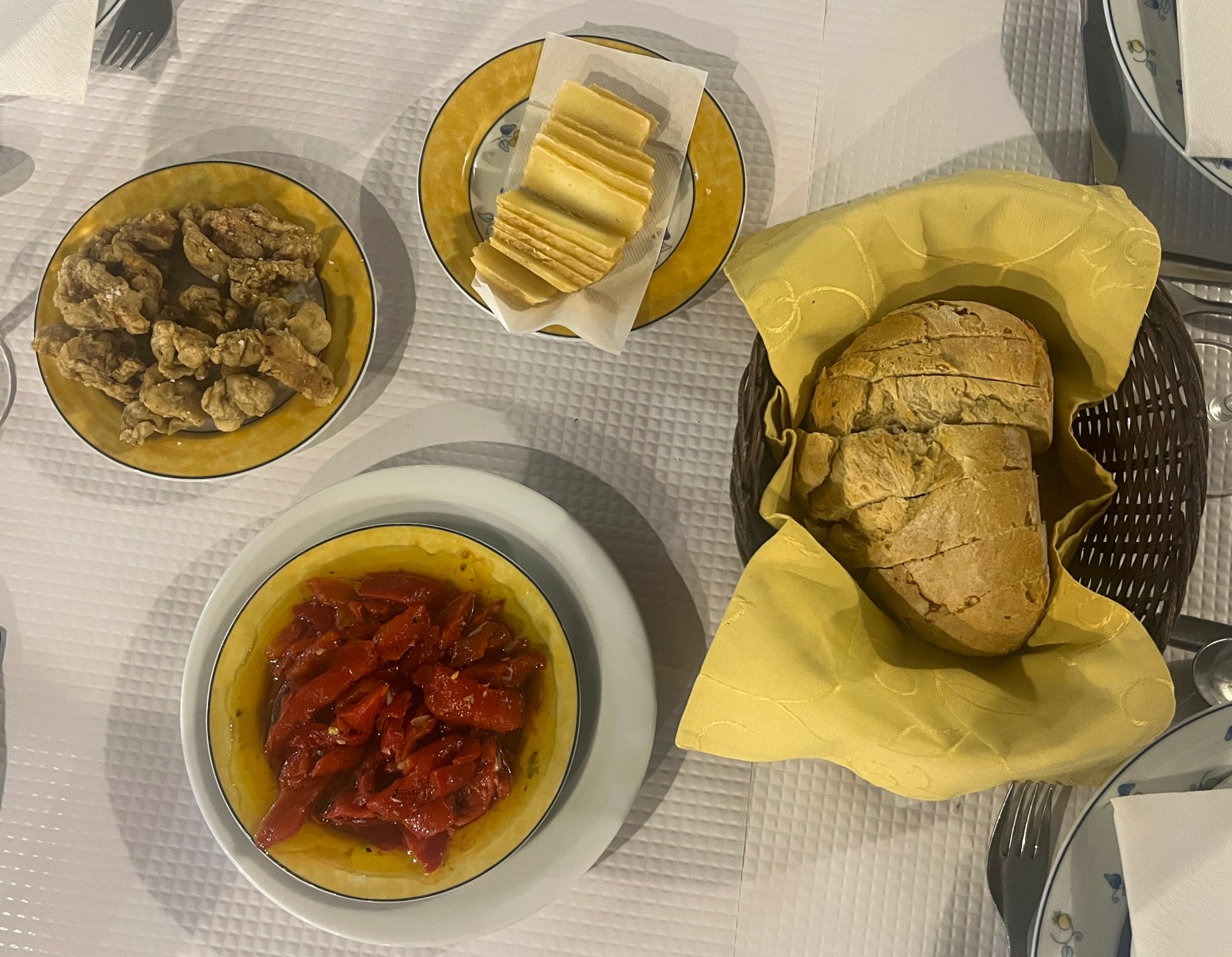
Don’t eat the snacks that are set out on your arrival unless you plan to pay for them. It’s a Portuguese idiosyncrasy, not a complimentary favour. (Photo: Tony Jackman)
At the start of the meal, there had been that moment of confusion that I had by now become accustomed to in Portuguese restaurants: the habit of a handful of dishes already being on the table when you arrive. This is not a little freebie, or the more polite amuse bouche (chef’s favour). It’s more of an invitation to enjoy these things – or reject them. If you eat any of them, they’re added to your bill. If you don’t want any of them, just let the waiter take them away. If you choose to eat them all, you’ve added about €15 to your bill, so consider that before tucking in.
One of them, as everywhere, was my now favourite queijo fresco. So we soon put paid to that. The soft and silky cool cheese is sliced thinly, and everyone we met liked to add a little salt and black pepper, though it can be eaten with nuts or honey. It’s often eaten with a salad but is also common as a breakfast bite.
The other items on the table as we sat down were the local cheese, again, pimentos (marinated peppers), torresmos (crackly pork rinds), and queijo de Évora, another very local cheese. This is a lovely thing about Portugal: the local cheese everywhere you go.
Back with our hosts at their lovely monte, they came through to the kitchen with a couple of bottles of port and some cheese and we relived the day that had passed.

Praça do Giraldo, formerly called Praça Grande, is the central town square in Évora. (Photo: Tony Jackman)
Rolling into Évora after two hours on the road from Cascais, parking near the edge of town and, within a minute, walking through these ancient, narrow streets with their old houses still inhabited. A dog yapping at you from a window ledge, a cat yowling at you from a window. Many facades in need of a lick of paint, which anyone who has visited ancient European cities knows is par for the course, even part of the appeal. Like a dilapidated Mediterranean wall with a lopsided plant pot stuck on it.
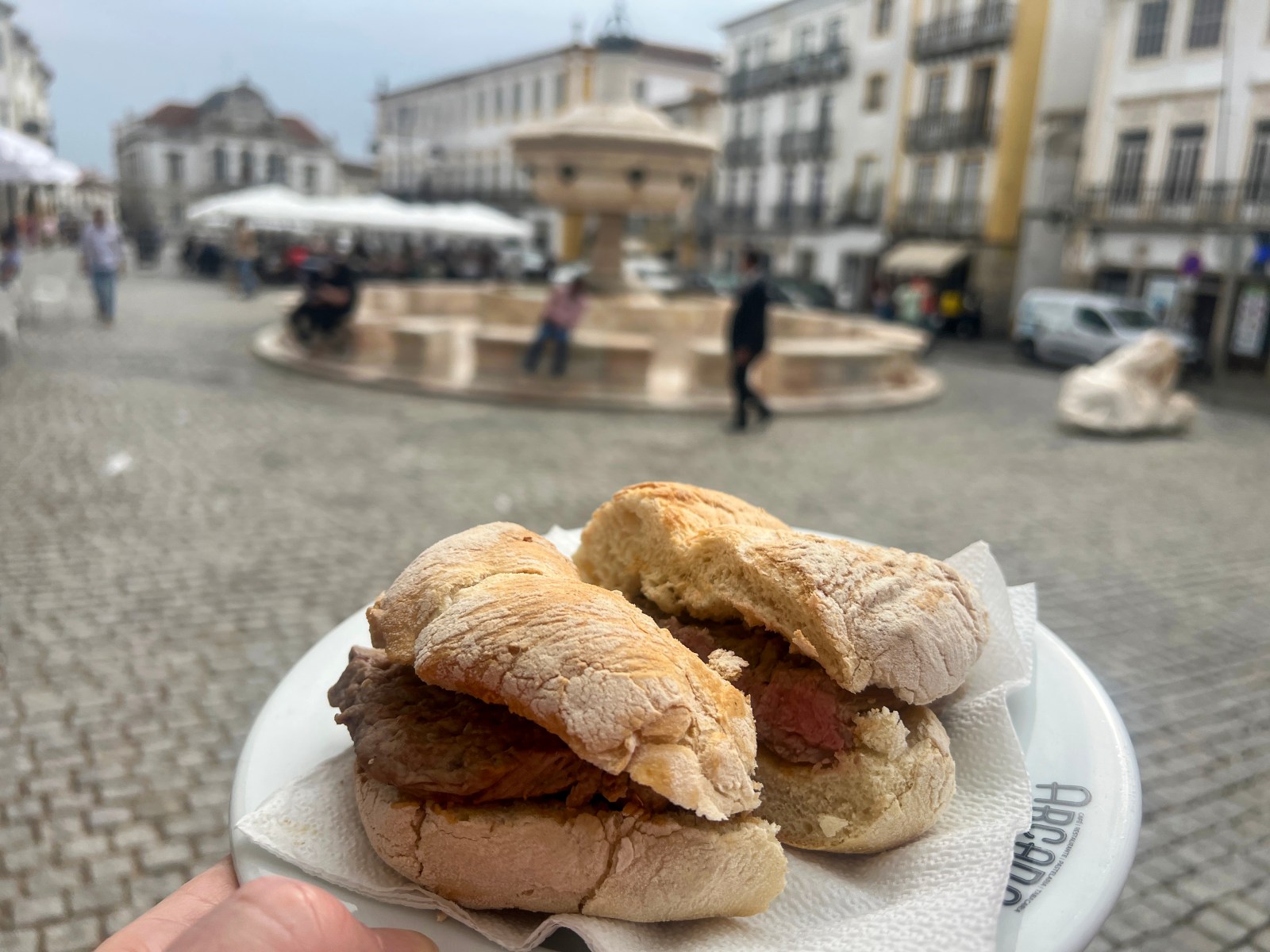
A prego roll on the Praça do Giraldo, Évora, in front of the beautiful baroque marble fountain. (Photo: Tony Jackman)
We ate a prego no pão (steak roll) at a café on the town square, photographed in front of a marble fountain. Hunger sated, there’s that intake of breath as you turn a corner and, stark against a silvery-feathered sky, the Roman Temple of Évora, often mistakenly referred to as the Temple of Diana, soars heavenwards in what was once the town’s forum, or public square.
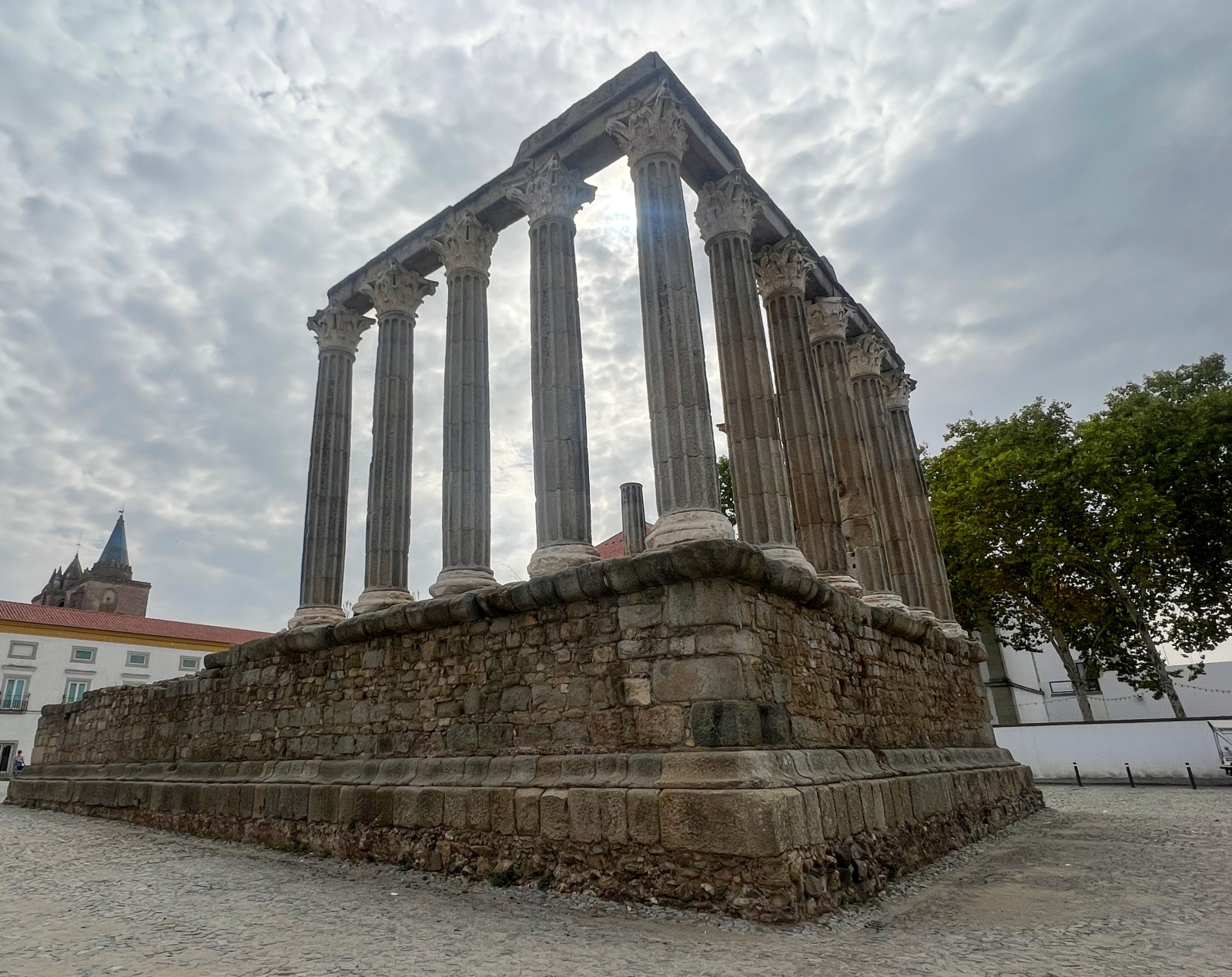
The Roman Temple of Évora, sometimes called the Temple of Diana. (Photo: Tony Jackman)
Just steps away is the Pousada de Évora, once a convent, and one of many pousadas throughout Portugal. They’re part of a state programme to preserve old forts, monasteries and the like by transforming them into smart hotels where the emphasis in the kitchen is on using local ingredients and preserving the old recipes. We were to visit one in Cascais the following day.
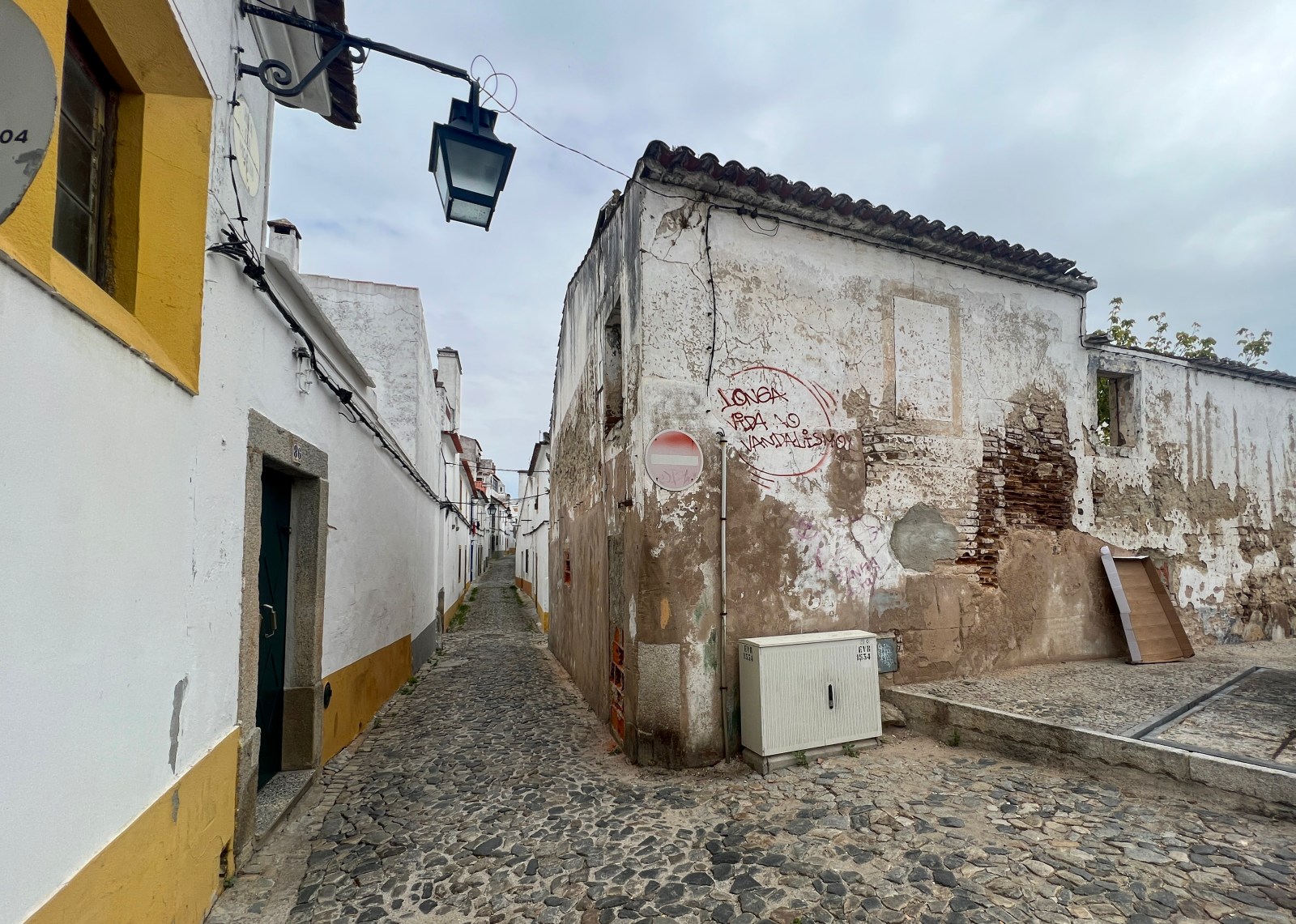
Like all over Europe, dilapidation holds a certain charm. (Photo: Tony Jackman)
There’s that moment when you step inside the Chapel of Bones (Capela dos Ossos) and your sense of reverence is interrupted by the shrill yap of a tourist shouting a grocery shopping list down her phone to her daughter back home. Inside a chapel built of bones! I whispered, “This is a place of quiet, ma’am… shhhhh.” She had the grace to shut up, putting a blushing hand to her mouth. This was far more annoying than this seems to suggest. She ruined it for me and I struggled to regain the sense of awe the place deserves.
But after some minutes a certain quiet took me as I, like thousands of visitors before me, tried to imagine who all the people might have been, whose sepia bones now form part of the fabric of a chapel. Their origins are disputed, but a strongly held belief is that Franciscan monks ordered that the human remains from 42 monastic cemeteries be gathered and put to use in the building of a chapel, to free up land. There are grimmer, darker theories.
Earlier, we had stepped into the adjacent Church of St Francis (Igreja de São Francisco) with its magnificently ornate chapels-within-a-church honouring the saints.
Dreams that night were filled with conflicting visions of gallant gladiators, bowed nuns, red-sashed monks and walls made of skulls.
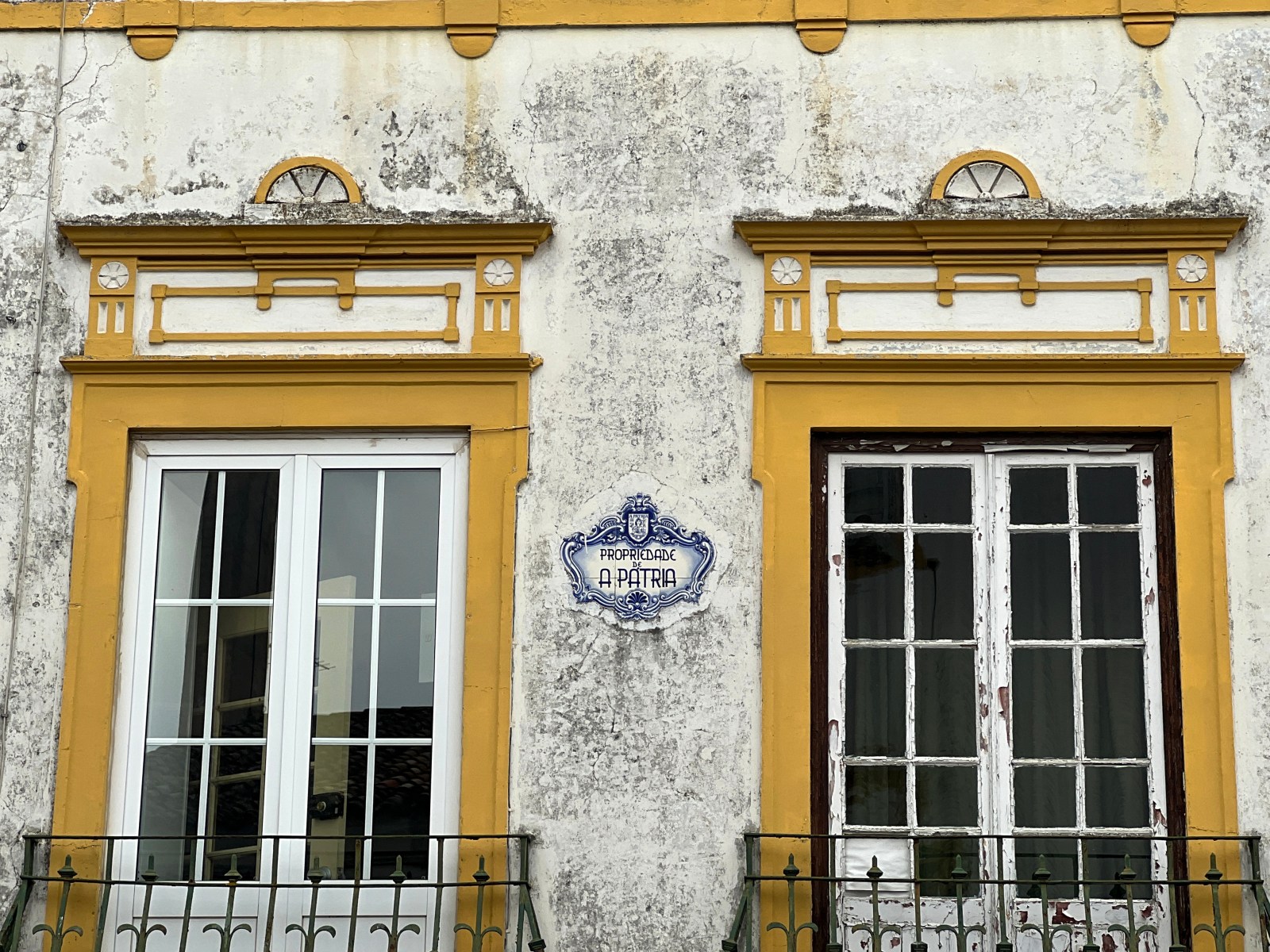
Évora is full of noble houses. (Photo: Tony Jackman)
At breakfast the next morning in the monte of our new friends, I try to make sense of quite where we are. It’s like visiting the Karoo for the first time. Yes, it’s the Karoo, but which part, where does it start and end? What makes it the Alentejo?
One thing is undoubtedly the cork, with which I’ve fallen in love, and the cured black ham, the cheeses, the delicateness of the bochechas, the strangeness they call migas de espargos. But it’s the slow pace of life too; a certain comfort in being somewhere you just want to be. And, like the Karoo, the odd windmill, sheep grazing, even cactus. But the feel is nothing like the Karoo; the Alentejo has a character all its own.
In fact, the Alentejo is both a region and a province. The greater region includes both Alentejo province and Ribatejo province. And the monte is just inside the latter, so, strictly speaking, we have spent the night in Ribatejo.
Near the house they call a monte that last morning, its owner showed me a cork tree up close, one that had never been harvested. The bark is mesmerising with its mystical folds and nooks as if it came from a children’s fairytale, not real life. Nearby, before we waved farewell, I photographed a small forest of cork oaks up close, demonstrating various phases of harvest.
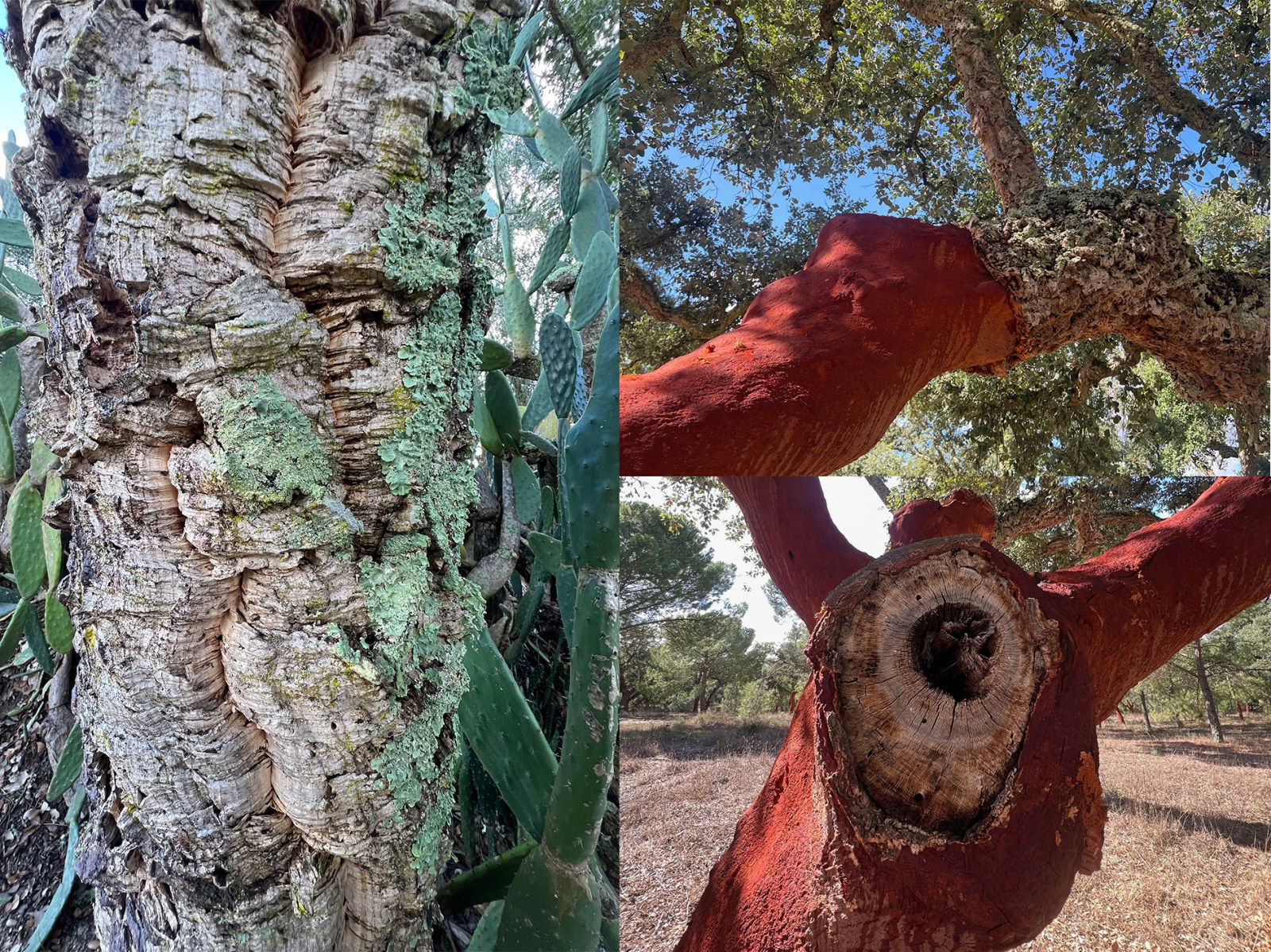
The beauty of a cork tree before (left) and after its cork has been harvested. (Photos and collage: Tony Jackman)
There’s a soul about the region. A tangible but thankfully indefinable something. And all of the best things are hard to define, to pin down precisely.
Like our Karoo, the Alentejo is more than merely a geographical region with precise borders. It has a life beyond that; it has a beating heart. A life that you can discern, if you have the eyes and ears for it. Even in just a day.
Coda
We’d traversed the Ponte 25 de Abril bridge in Lisbon to reach Évora. Now we were on the Ponte Vasco da Gama, all 17 km of it. From the bridge at one edge of Lisbon to the other, and with a minor lifetime in between.
Just one day and one night, but a whole world of wonder. DM
This is Part 2 of a four-part series on Tony Jackman’s visit to southern Portugal. Read part 1, on Belém and Lisbon, here. Read part 3, on Cascais, here.
Tony Jackman is Galliova Food Writer 2023, jointly with TGIFood columnist Anna Trapido.
Follow Tony Jackman on Instagram @tony_jackman_cooks.





Gods, Tony, but you’ve made me hungry!! I really love Portuguese food – the times I’ve been there have been absolutely magical. And the prices are WAY lower than France, Germany, Italy….
I don’t even know this food but I’m salivating😂
Makes me want to go jump on a plane, destination Portugal. Such a good read. And the food descriptions and photographs whet the appetite for the real thing.
Those cork trees aren’t painted😁. That’s the natural colour of their naked trunks after they have been denuded if their bark. But now I am hungry for pork loin……